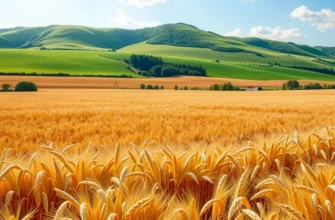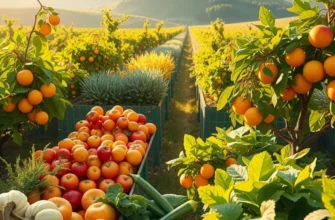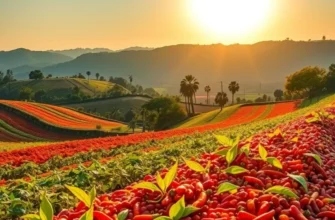Culinary traditions weave a vibrant tapestry of culture, history, and identity around the globe. Delving into historical culinary books offers food enthusiasts and culturally curious readers a unique window into how societies used ingredients, cooking techniques, and flavors to express their stories. Each page unfolds layers of heritage that reflect the environment, economy, and societal norms of their time, inviting readers to appreciate the past while celebrating the diverse cuisines of today.
The Flavors of History: What Cookbooks Reveal

Historical cookbooks offer a unique window into the culinary and cultural fabrics of their times. These texts reveal not just recipes, but the very soul of the societies in which they were written. By examining their pages, we explore the intricate tapestries of history, regional ingredients, and culinary techniques that define diverse cuisines.
One cannot discuss historical cookbooks without mentioning Apicius, arguably one of the earliest documented European cookbooks. Compiled during the Roman Empire, this text provides insights into the palates of ancient Rome. Through its collection of exquisite, often extravagant recipes, Apicius uncovers a society that prized indulgence and sophistication, reflecting the wealth and power of its elite. Ingredients like garum, a fermented fish sauce, were staples, highlighting the extensive trade networks and regional flavors embraced by the Romans.
Similarly, the medieval Arabic cookbook, “Kitab al-Tabikh,” offers a fascinating glimpse into the Middle Eastern world of the 10th century. It reveals a culinary scene rich in spices like coriander and cinnamon, alongside complex cooking techniques. Dishes such as stews and spit-roasted meats portray a culture deeply intertwined with the spice trade, which not only shaped the cuisine but also the economy and daily life. This cookbook is essential for understanding how culinary influences traveled across the Silk Road, melding diverse flavors into shared traditions. For more on the influences of trade on cuisine, explore culinary influences through trade.
Further east, the “Shijing” or “Book of Songs” from China, written over 2,500 years ago, includes descriptions of food and farming in its ancient verses. While not a cookbook per se, it reflects the dietary landscape of ancient China—a world where rice, millet, and wheat formed the dietary core, with soy sauce starting to emerge as a crucial flavoring agent. These ingredients underscore the relationship between agriculture and identity, illustrating how food marked social classes and seasonal cycles.
Crossing the ocean, the “American Cookery” by Amelia Simmons, published in 1796, marked a significant culinary milestone in post-revolutionary America. This was the first cookbook to be penned by an American, for Americans, filled with distinctly American ingredients like cornmeal. It underscored a burgeoning national identity through cuisine, embodying the resourcefulness and innovation of its people in using local resources to establish new culinary traditions.
Each of these historical texts offers a unique snapshot of their era, serving not just as practical guides for cooks but as narratives of their time. They tell stories of evolution, interaction, and continuity. By studying these cookbooks, we gain not just culinary knowledge but insights into the historical shifts that shaped current global food cultures. As we turn their pages, we taste the stories of our ancestors, one recipe at a time.
Treasures of Taste: Influential Cookbooks Around the World

The world of culinary art has been profoundly shaped by cookbooks, transcending mere collections of recipes to become vessels of cultural heritage. Each region’s historical cookbooks have left an indelible imprint on global food cultures, preserving and propagating traditions for countless generations.
One of the earliest known cookbooks is the “Apicius” from ancient Rome, believed to be compiled around the 4th century AD. This collection offers a rare glimpse into Roman culinary practices, with recipes reflecting the opulence of Roman feasts. Entries like the “patina”—layered dishes of meats and sauces—demonstrate the complexity and sophistication of Roman tastes, emphasizing the prominence of spice trades and their influence on Roman cuisine.
From the East, the “Yinshan Zhengyao,” or “Important Principles of Food and Drink,” written by Hu Sihui in 1330, stands as a testament to the Yuan dynasty’s culinary landscape in China. This isn’t just a cookbook but an integration of dietary therapy and culinary expertise, highlighting the Chinese philosophy that food is both nourishment and medicine, a perspective increasingly explored in modern functional foods studies.
In Europe, “Le Viandier,” attributed to Guillaume Tirel (Taillevent) during the 14th century, is a significant French cookbook that illustrates the transition from medieval flavors to more refined French gastronomy. Through its instructions on preparation and presentation, “Le Viandier” elevated cooking to an art form, influencing European cuisine by integrating exotic ingredients brought back from the Crusades.
Across the Atlantic, Amelia Simmons’ “American Cookery,” published in 1796, is celebrated as America’s first cookbook written by an American. It marked the adaptation of English recipes using new-world ingredients like corn and pumpkin, essential to the colonial diet. This cookbook not only provides insights into early American culinary preferences but also reflects the emerging independence of American identity.
“The Art of Cookery Made Plain and Easy” by Hannah Glasse, first published in 1747, unmistakably impacted cooking in Britain and its colonies. By demystifying French techniques and emphasizing accessible ingredients, Glasse democratized cooking, bridging the gap between English and French culinary methods and ensuring her book’s widespread use in households.
Colonial influences on India’s diverse cuisine are captured in the “Manasollasa” or the “Delight of the Mind,” an encyclopedic work from the 12th century by Someshvara III. Although not solely a cookbook, it divulges extensive details on food preparation, indicative of the rich tapestry of India’s regional flavors and preparations, many of which remain integral to Indian cooking today.
These historical cookbooks are much more than culinary instructions; they are snapshots of social, political, and economic conditions of their times. By chronicling the evolution of tastes and techniques, they illuminate the impacts of trade, exploration, and cultural exchange on food practices. To explore how these historical influences continue to shape today’s kitchen practices, visit this guide on culinary influences through trade.
As we delve into the rich culinary legacies captured in these texts, we appreciate how past kitchens laid the groundwork for the diverse global foodscape we relish today.
Final words
Historical culinary books offer a profound connection to the past, enriching our understanding of global food traditions and the societal context behind them. By exploring these texts, food enthusiasts and culturally curious readers can appreciate the evolution of recipes, ingredients, and cooking techniques that have shaped contemporary cuisines. These cookbooks not only preserve culinary knowledge but also encourage us to engage with cultural histories and foster a deeper appreciation for the diverse culinary landscape we enjoy today. As we explore the flavors of the world, we uncover stories that nourish the body and soul.








